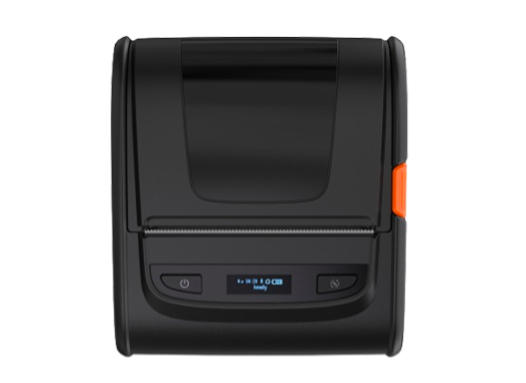Table of Contents
ToggleA mobile printer is a compact, portable device designed to provide printing capabilities on the go. Ideal for professionals who need to print documents, labels, or receipts while traveling or working in remote areas, mobile printers have become essential tools in various industries. This article will explore how a mobile printer works, the types of technology behind it, and the factors that influence its performance.
The Basic Functionality of a Mobile Printer
A mobile printer functions similarly to traditional desktop printers but is designed to be much smaller and lighter. It connects to a mobile device, such as a smartphone, tablet, or laptop, via Bluetooth, Wi-Fi, or USB, allowing users to print documents from anywhere. Depending on the model and intended use, these printers use different printing technologies, including thermal, inkjet, and impact printing.
Printing Technologies Used in Mobile Printers
1. Thermal Printing Technology
One of the most common technologies used in mobile printers is thermal printing. This method uses heat to transfer ink onto paper, typically in the form of pre-coated thermal paper. Thermal printers are favored for their compact design and speed, making them suitable for printing receipts, labels, or tickets. The resolution of thermal printers generally ranges from 200 to 300 dots per inch (DPI), providing clear and legible prints.
 2. Inkjet Printing Technology
2. Inkjet Printing Technology
Inkjet mobile printers use liquid ink sprayed onto paper to create text and images. Although inkjet printers are typically larger than thermal printers, some mobile inkjet models are designed to be portable. These printers can offer a higher resolution than thermal printers, usually between 600 and 1200 DPI, making them ideal for printing high-quality images and documents.
3. Impact Printing Technology
Impact printers use a mechanical hammer to strike an ink ribbon against paper. While less common in mobile printers today, this technology is still used for specialized applications, such as printing multi-part forms or receipts. Impact printers are robust but have a lower print quality compared to thermal and inkjet printers.
Factors Affecting Mobile Printer Performance
Several factors influence a mobile printer’s performance, including print speed, battery life, and print quality. Understanding these elements can help users select the best mobile printer for their needs.
Print Speed and Efficiency
Print speed is an essential factor for many professionals who need quick results. Most mobile printers have a printing speed of 2-5 pages per minute (ppm), although this can vary depending on the type of printer and the complexity of the document being printed. Thermal printers tend to be faster than inkjet printers, especially when printing simple text-based documents.
Battery Life and Portability
Battery life is crucial for mobile printers, as they are often used in environments where power sources are limited. Many mobile printers come with rechargeable lithium-ion batteries, with some models offering up to 10 hours of continuous printing. Battery life can be influenced by the printer’s usage frequency, print quality, and power settings. A well-designed mobile printer should balance portability with sufficient battery life for extended use.
Print Quality and Resolution
The resolution of a mobile printer determines how sharp and clear the printed content will be. Thermal printers generally provide adequate resolution for receipts and labels, but inkjet printers offer higher resolution and can handle more detailed images and text. For professional use, it is essential to consider the type of documents being printed to ensure the printer meets quality standards.
Applications and Uses of Mobile Printers
Mobile printers are widely used across different industries, providing convenience and efficiency. Some common applications include:
1. Retail: Mobile printers are often used in retail settings for printing receipts, price tags, and shipping labels. Thermal printers are particularly popular in this industry due to their speed and low maintenance requirements.
2. Healthcare: In healthcare settings, mobile printers are used to print patient wristbands, medical records, and prescriptions. They allow healthcare professionals to work more efficiently and accurately.
3. Logistics: Mobile printers are used in warehouses and shipping centers to print shipping labels, barcodes, and inventory records.
4. Field Service: For workers in remote locations, such as repair technicians or delivery personnel, mobile printers allow them to print invoices, service reports, or delivery receipts on-site.
Conclusion
A mobile printer works by using specialized printing technologies such as thermal, inkjet, or impact printing to produce high-quality prints in a compact, portable form. Factors such as print speed, battery life, and resolution play a crucial role in determining the performance of the printer. With applications ranging from retail to healthcare and logistics, mobile printers offer professionals the flexibility to print documents wherever they are, improving productivity and efficiency.
0
